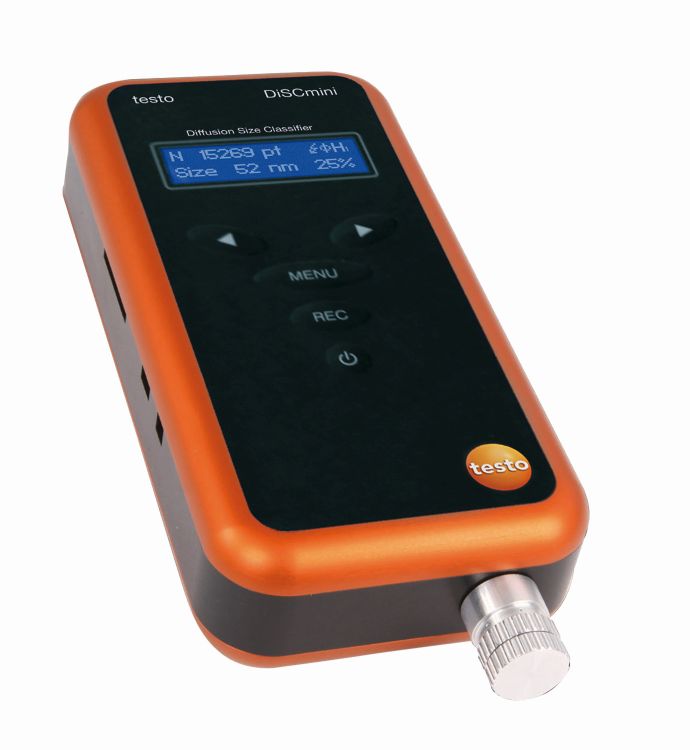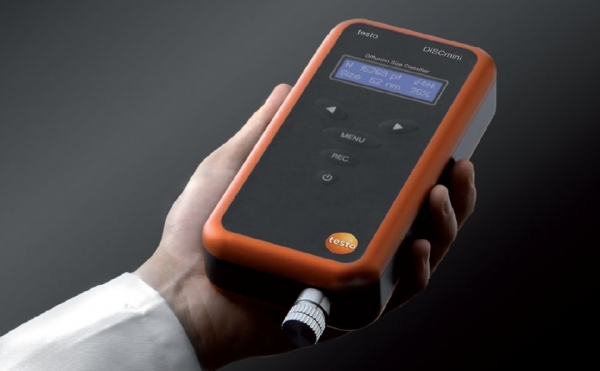Negative health effects due to nanoparticles appear to correlate particularly well with the number of concentrations or surfaces. Epidemiological and toxicological studies are mainly based on total mass, or they use assumptions such as "distance from a busy street" to describe personal exposure, although the health-related effects of particle number concentration are well known. We believe that this contradictory situation is due to the lack of adequate measuring instruments on the market.

This gap is now closed with the testo particle handheld measuring device, the "diffusion size classifier" testo DiSCmini. The testo DiSCmini is a portable measuring device for measuring the particle number and the mean diameter with a time resolution of up to 1 second (1 Hz). Simultaneous measurement of number concentration and particle size allows specification of other characteristic parameters, such as the lung deposited surface area (LDSA). The instrument is battery powered for up to 8 hours; data can be recorded on a memory card and transferred to an external computer via a USB cable.
The testo DiSCmini is particularly suitable for personal exposure monitoring in particle-laden workspaces with toxic air pollutants such as diesel soot, welding smoke, or industrial nanomaterials.
The testo DiSCmini is based on the electrical charging of aerosols. Positive air ions generated in a corona discharge are mixed with the aerosol. The charged particles are then detected in two stages by electrometers. The first detector stage is a stack of steel grids; small particles are preferably deposited on them by diffusion. The second stage is a highly effective particle filter that detects all other particles. The mean particle size can be obtained by analysing the two currents measured on the stages. The number of particles is determined with the total flow. The testo DiSCmini detects particles in the range from 10 to approx. 500 nm, while the modal value should be below 200 nm. The concentration range is about 1,000 to over 1,000,000 particles per cubic centimeter. The accuracy of the measurement depends on the shape of the particle size distribution and the number concentration and is usually about 10-15% compared to a reference CPC. The instrument should be serviced and calibrated once a year.
In contrast to other instruments, the testo DiSCmini requires no working fluids and no radioactive sources. Therefore, it can be operated in any position and for extended periods of time without the need for liquid replenishment. Typical applications are the determination of personal exposure in particle-polluted workplaces (diesel soot, welding smoke, industrial nanomaterials) or in susceptible groups (asthmatics, COPD patients). The development of large-scale measurement networks of ambient air becomes possible. The small size of the testo DiSCmini makes it particularly suitable for personal measurement campaigns. The high measuring frequency of 1 Hz enables fast monitoring.





